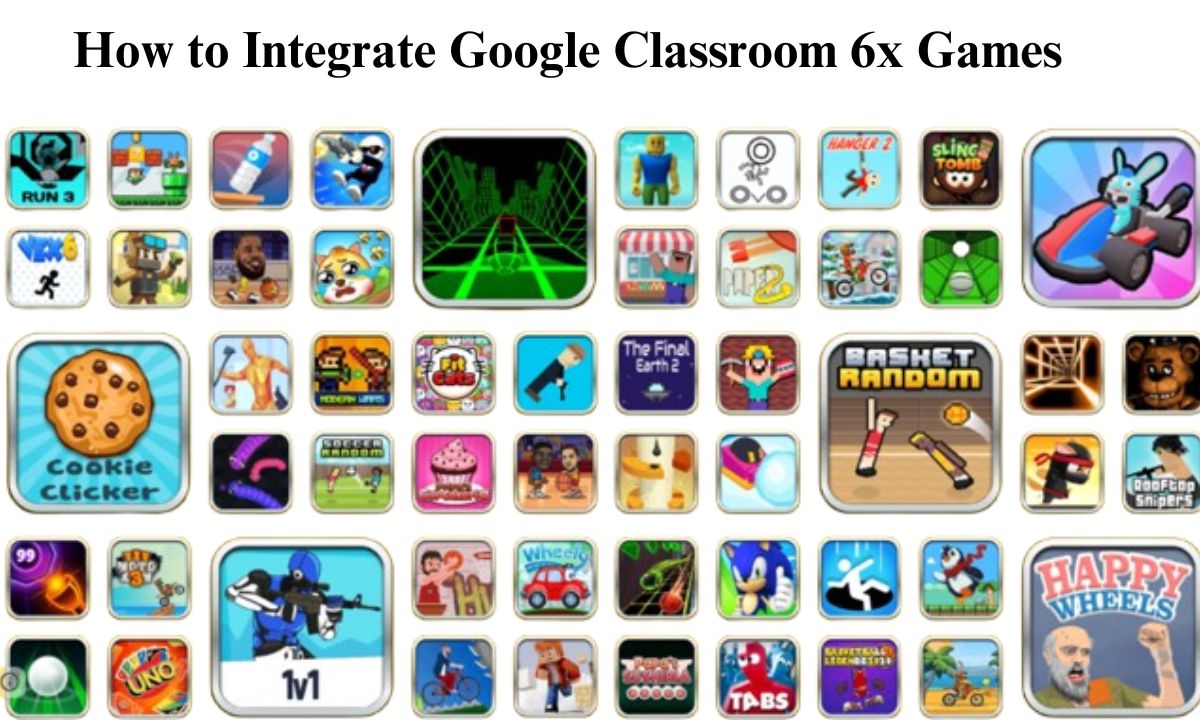In today’s digital age, integrating interactive games into lesson plans has become an essential strategy for engaging students and enhancing their learning experience.
Classroom 6x is a gaming platform that aims to simplify the online learning process. It offer a unique opportunity to combine educational content with fun, interactive elements.
This comprehensive guide will walk you through the process of incorporating these games into your lesson plans effectively.
Step 1: Identify Learning Objectives
Before diving into game selection, it’s crucial to establish clear learning objectives for your lesson. This step ensures that the games you choose align with your educational goals.
- Define specific skills or knowledge you want students to acquire.
- Consider the curriculum standards you need to meet.
- Think about how games can reinforce or introduce key concepts.
Identifying learning objectives helps you focus on the educational value of the games rather than just their entertainment factor. It also allows you to measure the effectiveness of the game-based learning approach.
Step 2: Select Appropriate Games
Once you have your learning objectives in place, it’s time to choose games that best support these goals. Google Classroom 6x Games offer a wide variety of options across different subjects and skill levels.
- Research available games that match your subject area and learning objectives.
- Consider the age and skill level of your students when selecting games.
- Look for games that offer customization options to tailor content to your specific needs.
- Read reviews or try the games yourself to ensure they meet your expectations.
Remember, the best games are those that not only teach but also engage and motivate students to learn. Look for games that offer a good balance of challenge and achievability.
Read This Blog: Ark: Survival Evolved (2017) Game Icons Banners
Step 3: Create a Structured Lesson Plan
With your objectives set and games selected, it’s time to create a structured lesson plan that incorporates these elements seamlessly.
- Start with an introduction that sets the context for the lesson and explains how the game relates to the learning objectives.
- Allocate time for game play, ensuring it doesn’t overshadow other important aspects of the lesson.
- Plan for pre-game activities that prepare students for the concepts they’ll encounter in the game.
- Include post-game discussions or activities to reinforce learning and address any questions.
A well-structured lesson plan ensures that game play enhances rather than distracts from the overall learning experience.
Step 4: Prepare Students for the Game
Before diving into game play, it’s important to prepare your students. This step helps set expectations and ensures that students understand the educational purpose behind the game.
- Explain the learning objectives and how the game relates to them.
- Provide a brief overview of the game mechanics and rules.
- Address any technical requirements or login procedures for accessing the game.
- Encourage questions and clarify any doubts students may have.
Proper preparation can significantly enhance the learning experience by helping students focus on the educational aspects of the game rather than getting caught up in figuring out how to play.
Step 5: Facilitate Game Play
During the game play phase, your role as an educator shifts to that of a facilitator. This step is crucial for ensuring that students stay engaged and on track.
- Monitor student progress and offer assistance when needed.
- Encourage collaboration and healthy competition, if applicable.
- Keep track of time to ensure the game doesn’t run over the allocated period.
- Be prepared to troubleshoot any technical issues that may arise.
Remember, your presence and guidance during game play can greatly enhance the learning experience for your students.
Step 6: Debrief and Discuss
After the game, it’s essential to debrief and discuss the experience with your students. This step helps solidify learning and allows students to reflect on their experience.
- Ask students to share their thoughts on the game and what they learned.
- Relate game elements back to the learning objectives.
- Address any misconceptions that may have arisen during game play.
- Encourage students to draw connections between the game and real-world applications of the concepts.
The debriefing process is a critical component of game-based learning, as it helps transform the gaming experience into concrete knowledge and understanding.
Also Read This Blog: Tex9.net A Comprehensive Guide to the Revolutionary Technology
Step 7: Assess Learning Outcomes
The final step in integrating Google Classroom 6x Games into your lesson plans is to assess the learning outcomes. This helps you determine the effectiveness of the game-based approach and identify areas for improvement.
- Use built-in game analytics, if available, to track student performance.
- Conduct follow-up quizzes or assignments to test retention of key concepts.
- Ask for student feedback on the effectiveness of the game in helping them learn.
- Reflect on your own observations of student engagement and understanding during the lesson.
Assessment not only helps you gauge the success of your game-based lesson but also provides valuable insights for future planning and improvement.
Examples of Google Classroom 6x Games for Different Subjects:

| Subject | Game Name | Description | Key Learning Outcomes |
| Math | Fraction Frenzy | Students solve fraction problems to progress through levels. | – Addition, subtraction, multiplication, and division of fractions<br>- Fraction comparison and equivalence |
| Science | Ecosystem Explorer | Students build and manage virtual ecosystems. | – Biodiversity concepts<br>- Food chains and webs<br>- Environmental impacts and conservation |
| Language Arts | Word Wizards | Vocabulary-building game with challenges based on synonyms, antonyms, and context clues. | – Vocabulary enhancement<br>- Reading comprehension<br>- Word relationships |
| History | Time Traveler’s Quest | Students navigate through different historical periods in an adventure game format. | – Key historical events<br>- Important historical figures<br>- Chronological understanding |
| Geography | Global Explorer | Challenges students to identify countries, capitals, and landmarks around the world. | – Geographical knowledge<br>- Spatial awareness<br>- Cultural understanding |
Frequently Asked Questions
How often should I incorporate games into my lessons?
The frequency of game integration depends on your curriculum and students’ needs. Aim for a balance, using games to reinforce key concepts or introduce new topics, typically once or twice a week.
What if some students finish the game faster than others?
Prepare extension activities or advanced levels for quick finishers. This ensures all students remain engaged and challenged throughout the lesson.
How can I assess individual student progress when using group games?
Many Google Classroom 6x Games offer individual player analytics. Additionally, you can use follow-up quizzes or discussions to gauge individual understanding.
Are there any potential drawbacks to using games in the classroom?
While games can be highly effective, overuse may lead to dependency. Ensure games complement rather than replace traditional teaching methods, and monitor screen time.
How can I convince administrators or parents about the educational value of classroom games?
Share research on game-based learning benefits, demonstrate alignment with curriculum standards, and showcase improved student engagement and performance data.
Conclusion
Integrating Google Classroom 6x Games into your lesson plans can revolutionize the way you teach and the way your students learn.
By following this step-by-step guide, you can create engaging, interactive lessons that not only meet your learning objectives but also captivate your students’ attention and boost their motivation to learn.

Amelia is a skilled SEO expert with a strong focus on content writing, keyword research, and web development. With a dedication to delivering results, she helps businesses optimize their online presence and drive organic growth.
Her expertise ensures that clients stay ahead in the ever-evolving digital landscape












